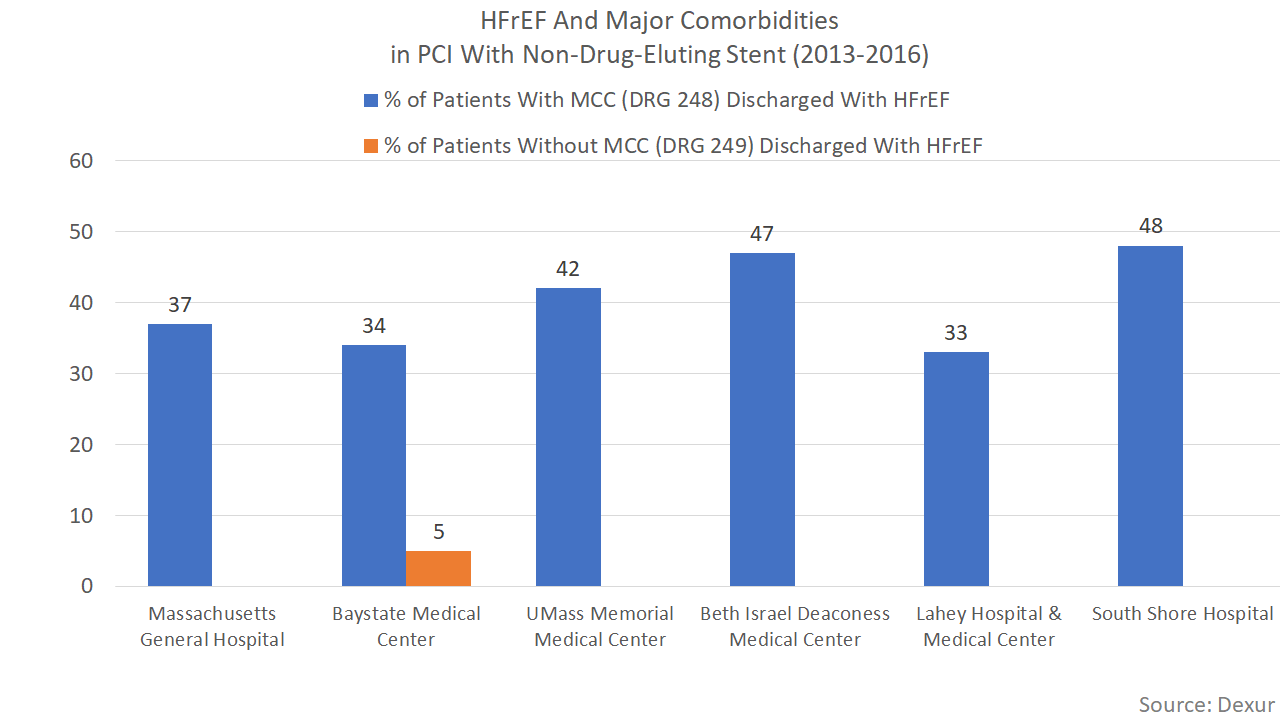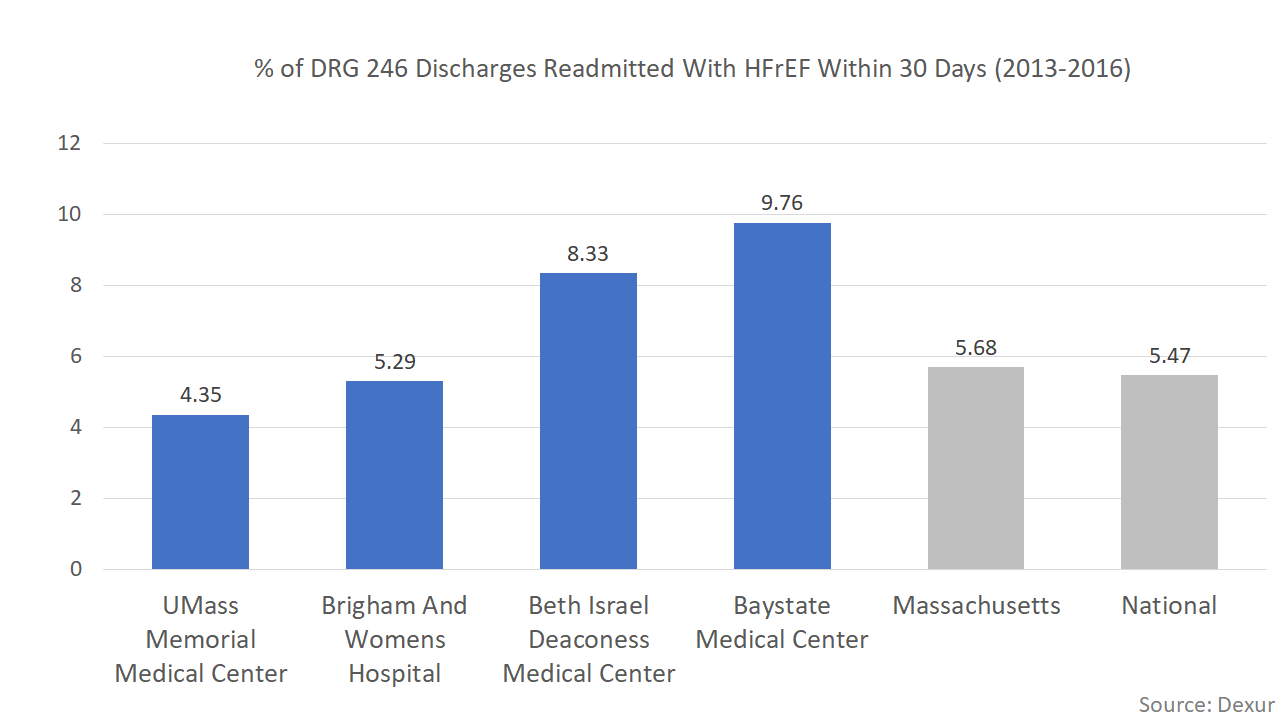HFrEF Incidence is Much Higher in PCI Patients with Major Comorbidities at Large Massachusetts Hospitals
In Heart Failure
Get Dexur’s Personalized Hospital Specific Presentation on Quality, Safety, Compliance & Education
By: James Pitt Jun. 04, 2018
Percutaneous coronary intervention (PCI) is a vascular procedure in which physicians place a stent inside a coronary artery to improve blood flow. Along with coronary artery bypass grafts (CABG), PCI is one of the most common procedures for coronary revascularization. However, some patients may need further interventions even after revascularization.
Implantable cardioverter-defibrillators (ICDs) improve mortality in qualifying patients by as much as 54% but implanting immediately after revascularization does not improve mortality. For this reason, recent revascularization is a contraindication to ICD implantation.
Wearable cardiac defibrillators (WCDs) can protect high-risk patients between revascularization and ICD implantation. Zishiri et. al (2013) examined mortality in 4958 patients with reduced ejection fraction who underwent revascularization. They found lower mortality among those discharged with WCDs than those discharged without defibrillators. This result held for both CABG (3% 90-day mortality with WCD vs 7% without, p=0.03) and PCI (2% 90-day mortality with WCD vs 10% without, p<0.0001). The mortality improvement was robust on long-term followup (mean 3.2 years) and propensity score analysis.
To examine HFrEF morbidity after PCI, Dexur analysts examined CMS inpatient discharge data from Massachusetts hospitals with over 10,000 patients per year. Patients who had PCI with drug-eluting stents were much more likely to have major complications/ comorbidities (MCC) if they also had HFrEF. The largest gap was at Baystate Medical Center, where 41% of DRG 246 patients but only 4% of DRG 247 patients had HFrEF. The smallest gap was at Brigham and Women’s Hospital, where 22% of DRG 246 patients and 7% of DRG 247 patients had HFrEF.

This also held true for patients who had PCI with non-drug-eluting stents. Six hospitals had high rates of HFrEF at discharge in patients who had PCI with non-drug-eluting stents and MCC. At five of them, HFrEF was too rare to report a rate in patients who had PCI with non-drug-eluting stents without MCC. The exception was Baystate Medical Center, where there were 12 discharges with HFrEF out of 235 total DRG 249 discharges.

HFrEF was a major contributor to 30-day readmissions in patients with drug-eluting stents and MCC.

These HFrEF readmissions accounted for about a quarter of all-cause readmissions in DRG 246 patients. All-cause readmission rates for DRG 246 were approximately double all-cause readmission rates for DRG 247. HFrEF, therefore, accounts for about half the burden of major complications in patients discharged after PCI with drug-eluting stents.
REGISTERED USERS & SUBSCRIBERS GET ACCESS TO:
From 2013-2016, at
- Total Discharges (Jan 2013 to Dec 2016)
- Total Discharges After Exclusion
- All Cause 30 Day Readmissions
- All Cause 30 Day Readmission Rate
- 30 Day HFrEF Readmissions
- 30 Day HFrEF Readmission Rate
- State 30 Day HFrEF Readmission Rate
- National 30 Day HFrEF Readmission Rate
- Total HFrEF Discharges at DRG
- % of HFrEF Discharges at DRG
- State % of HFrEF Discharges at DRG
- National % of HFrEF Discharges at DRG
Hospitals mentioned in this article:
- Baystate Medical Center (Springfield, MA)
- Beth Israel Deaconess Medical Center (Boston, MA)
- Brigham and Women’s Hospital (Boston, MA)
- Lahey Hospital and Medical Center (Burlington, MA)
- Massachusetts General Hospital (Boston, MA)
- South Shore Hospital (South Weymouth, MA)
- UMass Memorial Medical Center (Worcester, MA)
ABOUT THE AUTHOR
